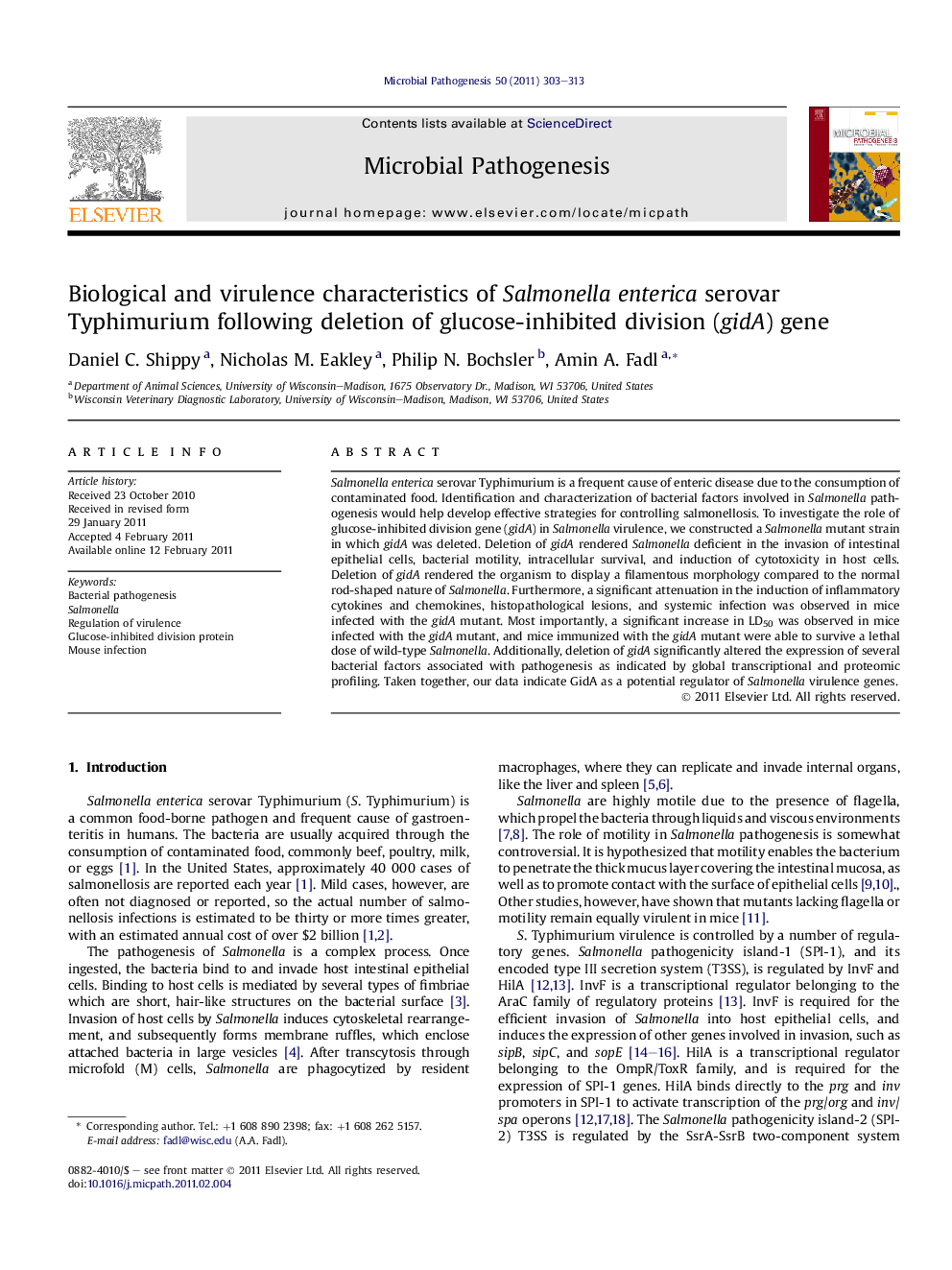| Article ID | Journal | Published Year | Pages | File Type |
|---|---|---|---|---|
| 3416722 | Microbial Pathogenesis | 2011 | 11 Pages |
Salmonella enterica serovar Typhimurium is a frequent cause of enteric disease due to the consumption of contaminated food. Identification and characterization of bacterial factors involved in Salmonella pathogenesis would help develop effective strategies for controlling salmonellosis. To investigate the role of glucose-inhibited division gene (gidA) in Salmonella virulence, we constructed a Salmonella mutant strain in which gidA was deleted. Deletion of gidA rendered Salmonella deficient in the invasion of intestinal epithelial cells, bacterial motility, intracellular survival, and induction of cytotoxicity in host cells. Deletion of gidA rendered the organism to display a filamentous morphology compared to the normal rod-shaped nature of Salmonella. Furthermore, a significant attenuation in the induction of inflammatory cytokines and chemokines, histopathological lesions, and systemic infection was observed in mice infected with the gidA mutant. Most importantly, a significant increase in LD50 was observed in mice infected with the gidA mutant, and mice immunized with the gidA mutant were able to survive a lethal dose of wild-type Salmonella. Additionally, deletion of gidA significantly altered the expression of several bacterial factors associated with pathogenesis as indicated by global transcriptional and proteomic profiling. Taken together, our data indicate GidA as a potential regulator of Salmonella virulence genes.
